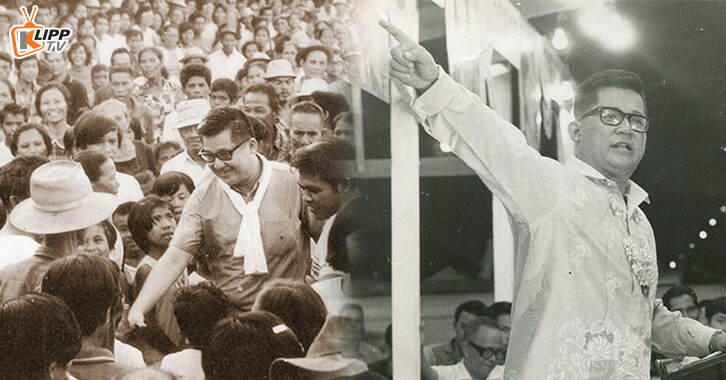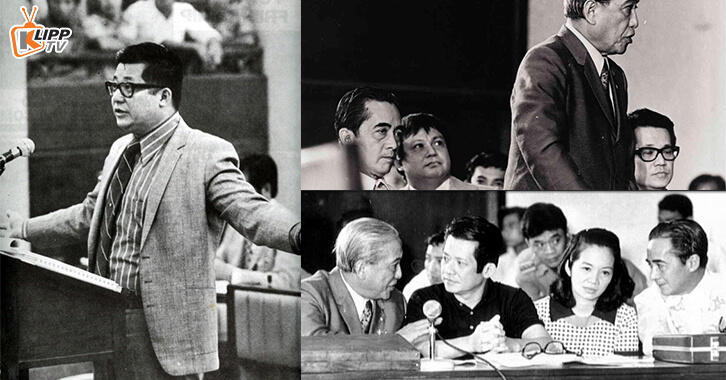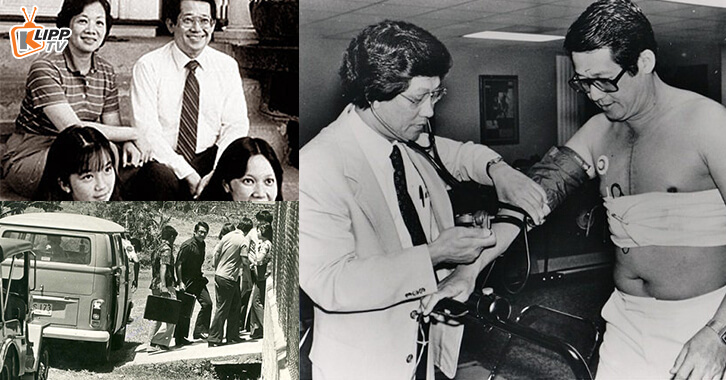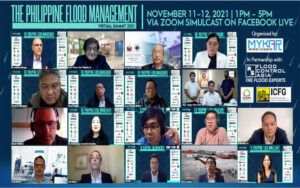
NINOY AQUINO: REVISITED
Known as the most vocal opposer to the Marcos regime, Benigno Simeon “Ninoy” Aquino Jr. was one of the most renowned politicians in the Philippines.
But before being put into the limelight as one of the Marcoses’ tough critics, Aquino became famous for his gifts as a public speaker and his brilliant mind, as well as for his great ambition not only for himself but for the nation.
In commemoration of the 34th Anniversary of his martyrdom, let us revisit a tale-old story of a fallen hero and a public servant, his life, struggles and legacy…
YOUNG NINOY

Ninoy Aquino was born on November 27, 1932, in Tarlac Province, to a prominent family. He came from an entrenched familial elite which to this day dominates Philippine politics. While being physically appealing and impressively articulate, the young Ninoy started off his career as a war time journalist. At a young age of 17, Aquino was the youngest correspondent to cover the Korean dispute for Manila Times.
At the age of 22 he was elected as the mayor of his hometown, Concepcion, Tarlac and by the time he was dubbed as the “Wonderboy of Philippine Politics” Ninoy made history as the youngest ever to be elected as senator at the age of 34.
NINOY’S FIGHT

“It would always be the same crooks, the same money interests who would take fullest advantage of democracy or any kind of government in the Philippines, while the poor and the brave would always lose out. The batters change in the game of Philippine politics, but the baseball team remains the same and the game remains fixed,”Ninoy once said.
Prophetic.
As everyone thought, Ninoy would clamber up to the nation’s highest office as the Liberal Party’s standard bearer in the 1973 presidential elections. The declaration of Martial Law on September 21, 1972 was bound to usher a defining moment in Ninoy’s evolution as a political leader. The military rule turned Ninoy to be the most high-profile disparager and political prisoner of Ferdinand Marcos, as the government suspends the constitution, abolish the congress and silence its detractors and the media.
Incarcerated in Fort, Bonifacio, Ninoy’s guilt was tried on the charges of murder, subversion and illegal possession of firearms. The political wonderboy then went on a 40- day hunger strike that nearly cost his life. During these trying times, he began to question his faith and wondered how God would allow such suffering and despair. But it is in the depths of desolation that he found spiritual transformation and felt ashamed for whimpering when his character was placed under the most challenging times.
Ninoy then was pronounced guilty by the military tribunal and was sentenced to die in 1977. Ninoy, however, avoided the death row since human rights violations under the Marcos government gained intense international perusal which caused the government its inability to carry out death sentences.
THE EXILED ADVOCATE

“A pact with the devil, is no pact at all.” Ninoy said as he decided to renounce his agreement with then First Lady, Imelda Marcos.
The “pact” was arranged when Ninoy supposedly agreed to the First Lady’s two conditions during a secret visit in the hospital: (1) He will leave, but will return to the country. (2) While in America, he should not speak ill of the Marcoses.
After seven years and seven months in solitary confinement, the opposition’s leader got amnesty in the strangest sort of way as Marcos allows him to fly to the United States for a bypass surgery.
As the Aquino family tried to rebuild their lives in Boston, Massachusetts, Ninoy called off his agreement with the Marcoses by spending his remaining years giving lectures and public speaking engagements across United States that are critical of the Marcos government.
THE RETURN THAT NEVER WAS

“If it’s my fate to die by an assassin’s bullet, so be it… the Filipino is worth dying for.” Ninoy said during his flight back home to the Philippines on August 21, 1983. As he was joined by several journalists on the plane, he delivered more chilling statements that is prognostic of what was about to happen by the time he set foot on Philippine soil.
His years in prison, and exile in the United States may have softened the toughest critic of the Marcos regime, but that did not stop him from restoring democracy in what was deemed as the darkest era of the Philippines.
Although the restoration of democracy seem futile, it was high- time for the champion of the unrest to make a glorious comeback that he was well deserving of. But just as when the Senator descends the plane’s gangway on that historic 21st day of August, Ninoy was fatally shot on the head.
THE AWAKENING
The Marcos regime may have not seen it coming but, Ninoy’s unexpected yet foreseen death seemed to be the last straw. As the nation rose in defiance, and the courage exhibited by Ninoy through the years was most infectious at that time.
By the end of 1983, the Philippines’ economy plunged into bankruptcy and the nation’s turmoil cannot be contained. The Filipinos decided they had enough. Marcos gave into public pressure and had called for a snap election. Ninoy’s widow, Cory Aquino was chosen by the opposition to be their presidential bet.
When the 1986 snap election was marred by rampant cheating and violence the collective courage of a nation unrest grew bigger than ever. From what seemed to be an alarming act of rebellion comes a massive protest by prayers. An estimated 2 million people gathered during the peak of the EDSA People Power Revolution on February 1986.
In the morning of February 25, Corazon Aquino was declared President of the Philippines.
THE FILIPINO IS WORTH DYING FOR
What could have happened if Ninoy Aquino lived?
The Filipinos are known for being resilient, may it be deadly natural disasters or violent political agendas. Filipinos are known to make it through the toughest times. Ninoy’s death may have happened during a unique time in the Philippine history.
During the Marcos’ regime, the Filipino people have reached the point where human rights, aspirations and promises of good governance have long been denied. All those suppressed feelings of turmoil, unrest and disappointments combined made the people feel that they were about to lose patience and most of all, hope. Ninoy’s death turned out to be the tipping point, in which the Filipinos have finally exclaimed, “We have had enough!”
If Ninoy Aquino have lived, the Filipino people may have still trudged along chaos and confusion. In a point where the Marcos government may have still remained in their position. Maybe it would have been over eventually, but not likely with the lighting speed turn- of- events during August 21.





